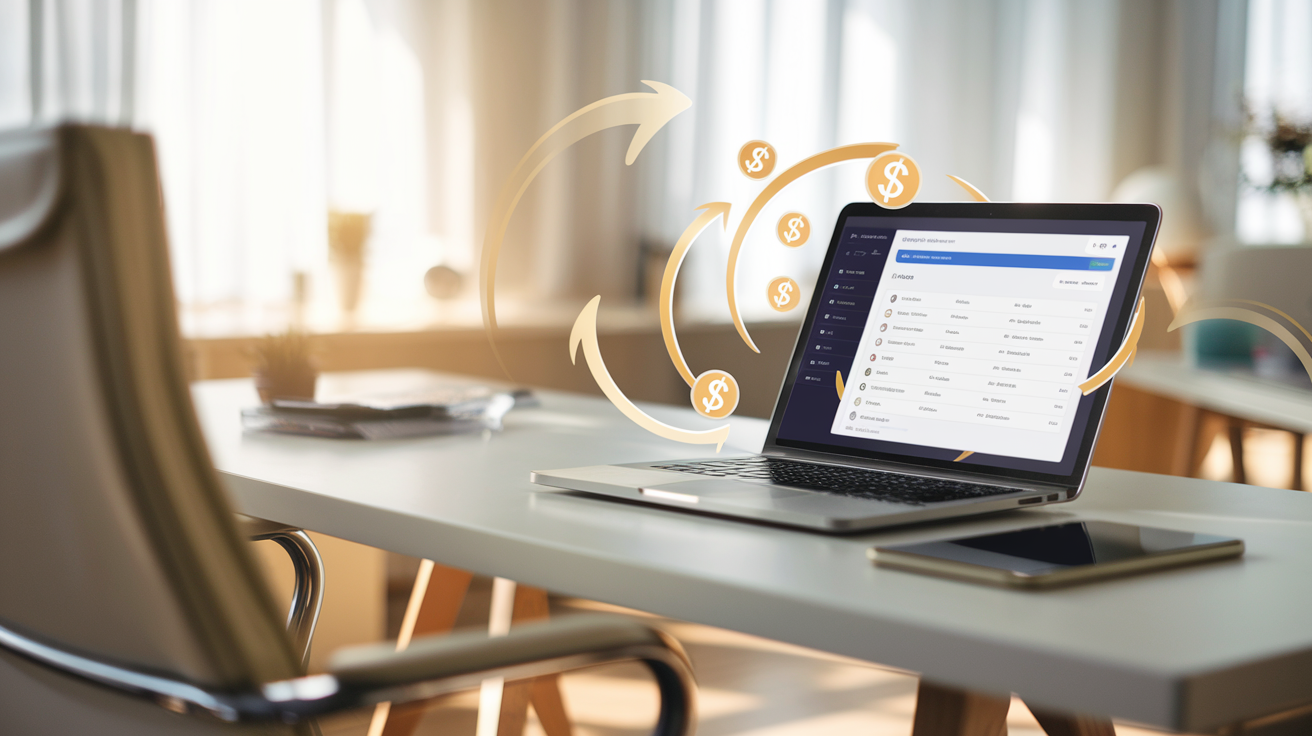How to Write Emails That Sell: The Complete Masterclass
In an era where the average person receives 121 emails daily, cutting through the noise requires more than clever subject lines and aggressive sales pitches. The most successful email marketers have mastered the delicate balance between persuasive communication and genuine value delivery.
The challenge isn’t just getting your emails opened—it’s creating messages that recipients actually want to read, that build lasting relationships, and that drive conversions without triggering spam filters or damaging your sender reputation. This comprehensive guide will transform your approach to email marketing, providing you with the strategies, frameworks, and tactical insights needed to create emails that sell authentically.
Whether you’re a solopreneur launching your first email campaign or a seasoned marketer looking to optimize your approach, this masterclass will equip you with the tools to write emails that convert while building genuine connections with your audience.
Chapter 1: The Psychology of Email Persuasion
Understanding the Modern Email Recipient
Today’s email recipients are sophisticated, time-constrained, and highly selective about what content they engage with. They can spot promotional emails from miles away and have developed keen instincts for identifying valuable content versus thinly veiled sales pitches.
Key Psychological Principles:
Reciprocity: People feel obligated to return favors. When your emails consistently provide value, recipients become more receptive to your offers.
Social Proof: Humans follow the crowd. Testimonials, case studies, and user-generated content in emails significantly boost credibility.
Scarcity and Urgency: Limited-time offers and exclusive opportunities create motivation to act, but must be used authentically to maintain trust.
Authority: Positioning yourself as an expert through valuable insights and proven results builds trust and increases conversion rates.
Consistency: People prefer to act in ways that align with their previous commitments and self-image.
The Trust-First Approach
Building trust through email marketing requires a fundamental shift from “selling to” to “serving with purpose.” This approach involves:
Value-First Messaging: Every email should provide something valuable—insights, tips, entertainment, or solutions—before asking for anything in return.
Transparency: Being honest about your intentions, clearly identifying promotional content, and setting proper expectations.
Consistency: Maintaining a regular, predictable communication schedule that recipients can rely on.
Respect: Honoring unsubscribe requests, avoiding over-mailing, and respecting your audience’s time and attention.
Chapter 2: Advanced Email Strategy Framework
The HELPS Framework for Email Success
H – Hook: Capture attention with compelling subject lines and opening sentences E – Engage: Provide valuable content that resonates with your audience L – Link: Create logical connections between your content and your offer P – Prove: Use social proof and credibility indicators to build trust S – Sell: Make clear, compelling offers that feel natural and valuable
Email Campaign Types and Their Purposes
1. Welcome Series (Onboarding)
Purpose: Introduce new subscribers to your brand and set expectations Structure: 3-7 emails over 7-14 days Content Strategy:
- Email 1: Welcome and immediate value delivery
- Email 2: Your origin story and mission
- Email 3: Best resources or popular content
- Email 4: Social proof and testimonials
- Email 5: Soft introduction to your products/services
2. Educational Series (Nurturing)
Purpose: Build authority and maintain engagement Frequency: Weekly or bi-weekly Content Strategy:
- Industry insights and trends
- How-to guides and tutorials
- Case studies and success stories
- Behind-the-scenes content
- Q&A sessions addressing common questions
3. Promotional Series (Selling)
Purpose: Convert subscribers into customers Structure: 3-7 emails over 5-10 days Content Strategy:
- Problem agitation and solution introduction
- Detailed benefit explanations
- Social proof and testimonials
- Objection handling
- Urgency and scarcity elements
- Final call to action
4. Re-engagement Series (Retention)
Purpose: Win back inactive subscribers Structure: 2-4 emails over 2-4 weeks Content Strategy:
- “We miss you” personalized message
- Exclusive content or offers
- Preference center options
- Final “last chance” message
Advanced Segmentation Strategies
Behavioral Segmentation
- Purchase history: Tailor offers based on previous buying behavior
- Engagement level: Different messaging for highly engaged vs. passive subscribers
- Website activity: Segment based on pages visited and time spent
- Email interaction: Open rates, click patterns, and response behavior
Demographic Segmentation
- Geographic location: Time zone considerations and local relevance
- Industry or job role: B2B specific messaging
- Company size: Relevant solutions for different business scales
- Experience level: Beginner vs. advanced content
Psychographic Segmentation
- Values and interests: Align messaging with subscriber motivations
- Learning preferences: Video vs. text content preferences
- Communication style: Formal vs. casual tone preferences
- Purchase motivations: Price-sensitive vs. quality-focused buyers
Chapter 3: Mastering Subject Lines That Get Opened
The Anatomy of High-Converting Subject Lines
Length Optimization: 30-50 characters for mobile optimization, 6-8 words for maximum impact
Emotional Triggers: Use curiosity, urgency, benefit-focused language, and personalization
Power Words That Convert:
- Curiosity: “Secret,” “Revealed,” “Behind the scenes”
- Urgency: “Limited time,” “Ending soon,” “Don’t miss”
- Benefit: “Free,” “Save,” “Boost,” “Transform”
- Exclusivity: “Exclusive,” “Members only,” “Private”
Subject Line Categories and Examples
1. Benefit-Focused Subject Lines
- “5 ways to double your email open rates”
- “The productivity hack that saves 2 hours daily”
- “Your revenue could increase by 40% with this strategy”
2. Curiosity-Driven Subject Lines
- “The mistake 90% of marketers make (and how to avoid it)”
- “Why your competitors are secretly worried”
- “The surprising truth about email marketing”
3. Urgency-Based Subject Lines
- “24 hours left: Your exclusive discount expires”
- “Last chance to join before prices increase”
- “Only 5 spots remaining for our masterclass”
4. Personal/Story-Based Subject Lines
- “My biggest business mistake (and what I learned)”
- “The day I almost gave up on my business”
- “What my grandmother taught me about sales”
5. Question-Based Subject Lines
- “Are you making these email marketing mistakes?”
- “What if I told you there’s a better way?”
- “Ready to transform your business in 30 days?”
Subject Line Testing and Optimization
A/B Testing Framework
- Test one element at a time: Subject line length, emotional appeal, or personalization
- Significant sample sizes: Minimum 1,000 subscribers per variation
- Clear success metrics: Open rates, click-through rates, or conversion rates
- Testing duration: 24-48 hours for reliable results
Advanced Testing Strategies
- Multivariate testing: Test multiple elements simultaneously
- Seasonal optimization: Adjust messaging for holidays and events
- Audience-specific testing: Different approaches for different segments
- Timing optimization: Test send times alongside subject lines
Chapter 4: Crafting Compelling Email Content
The Email Structure That Converts
1. The Opening Hook (First 20 words)
Your opening sentence must immediately capture attention and create a reason to continue reading.
Effective Opening Strategies:
- Start with a surprising statistic
- Ask a thought-provoking question
- Share a brief, relatable story
- Make a bold statement or prediction
Examples:
- “Yesterday, I watched a 7-figure business owner make a mistake that cost him $50,000…”
- “What if everything you know about email marketing is wrong?”
- “The client who fired me taught me the most valuable lesson of my career.”
2. The Value Delivery (Main Body)
This is where you provide the promised value while building toward your offer.
Content Structure Options:
Problem-Solution Framework:
- Identify a specific problem your audience faces
- Agitate the problem with consequences
- Present your solution as the natural answer
- Support with proof and examples
Story-Based Framework:
- Set the scene with relatable context
- Build tension or introduce conflict
- Reveal the resolution or lesson learned
- Apply the lesson to your audience’s situation
List-Based Framework:
- Promise a specific number of tips/strategies
- Deliver each point with clear explanations
- Include real examples or case studies
- Summarize key takeaways
3. The Transition to Offer
The most crucial part of any sales email is the smooth transition from valuable content to your offer.
Effective Transition Phrases:
- “Speaking of [content topic], I’ve been working on something that might help…”
- “This reminds me of a tool I created specifically for this challenge…”
- “If you found this helpful, you might be interested in…”
- “I’ve helped dozens of people solve this exact problem through…”
Advanced Personalization Techniques
Beyond First Names
- Behavioral personalization: Reference specific actions they’ve taken
- Preference personalization: Acknowledge their stated interests
- Journey personalization: Tailor content to their stage in the customer journey
- Geographic personalization: Include location-specific references
Dynamic Content Strategies
- Product recommendations: Based on browsing or purchase history
- Content suggestions: Related articles or resources
- Pricing displays: Show relevant pricing tiers
- Event information: Location-based events or webinars
Personalization Examples
Instead of: “Hi [Name], here’s today’s marketing tip…” Try: “Hi [Name], since you downloaded our social media guide last week, I thought you’d appreciate this email marketing strategy that complements what you’re already doing…”
Writing Techniques That Increase Engagement
1. Conversational Tone
Write as if you’re speaking to a friend, not presenting to a boardroom.
Techniques:
- Use contractions (you’re, we’re, it’s)
- Include rhetorical questions
- Add personal anecdotes
- Use everyday language instead of jargon
2. Scannable Formatting
Most people scan emails before deciding whether to read them fully.
Formatting Best Practices:
- Short paragraphs (1-3 sentences)
- Bullet points for lists
- Bold key phrases
- White space for visual breaks
- Clear section headers
3. Active Voice and Strong Verbs
Active voice creates more engaging, direct communication.
Examples:
- Passive: “Mistakes were made in the campaign”
- Active: “We made mistakes in the campaign”
- Weak: “You can get better results”
- Strong: “You’ll achieve better results”
Chapter 5: Call-to-Action Optimization
The Psychology of Effective CTAs
A call-to-action is more than a button—it’s a psychological trigger that should feel like the natural next step in the reader’s journey.
Key Psychological Principles:
- Clarity: Readers should instantly understand what happens when they click
- Value: The CTA should promise clear benefit
- Urgency: Create motivation to act now rather than later
- Ease: The action should feel simple and low-risk
CTA Copywriting Formulas
1. The Benefit-Forward Formula
Structure: [Action Verb] + [Benefit] + [Time Frame] Examples:
- “Get your free template now”
- “Start your 30-day trial today”
- “Download your guide instantly”
2. The Urgency Formula
Structure: [Action Verb] + [Urgency Trigger] + [Benefit] Examples:
- “Claim your spot before it’s gone”
- “Lock in your discount today”
- “Secure your bonus now”
3. The Social Proof Formula
Structure: [Join/Get] + [Social Proof] + [Benefit] Examples:
- “Join 10,000+ marketers getting better results”
- “Get the tool trusted by Fortune 500 companies”
- “Access the course 5,000+ students love”
Button Design and Placement
Visual Design Principles
- Color contrast: CTAs should stand out from the email design
- Size: Large enough to be easily clickable on mobile
- Shape: Rounded corners typically perform better than sharp edges
- Spacing: Adequate white space around the button
Placement Strategies
- Above the fold: At least one CTA should be visible without scrolling
- After value delivery: Place CTAs after providing valuable content
- Email signature: Include a subtle CTA in your signature
- Multiple placements: For longer emails, include 2-3 CTAs
Advanced CTA Strategies
1. Progressive CTAs
Match the CTA to the subscriber’s stage in the customer journey:
- Awareness stage: “Learn more,” “Download guide”
- Consideration stage: “See pricing,” “Compare options”
- Decision stage: “Start trial,” “Buy now”
2. Micro-Commitments
Use small actions to build toward larger commitments:
- “Reply with your biggest challenge”
- “Take our 30-second quiz”
- “Watch this 2-minute video”
3. Choice Architecture
Present options that guide toward your preferred action:
- “Choose your plan: Starter, Professional, or Enterprise”
- “Pick your date: Tuesday or Wednesday workshop”
- “Select your bonus: Template pack or video course”
Chapter 6: Building Trust and Credibility
Establishing Authority Through Content
1. Expertise Demonstration
- Industry insights: Share unique perspectives on trends
- Data and research: Include relevant statistics and studies
- Case studies: Detail specific client successes
- Thought leadership: Take positions on industry debates
2. Transparency and Authenticity
- Behind-the-scenes content: Show your process and team
- Honest communication: Admit mistakes and share lessons learned
- Clear communication: Explain your methods and reasoning
- Consistent voice: Maintain the same tone across all communications
Social Proof Integration
Types of Social Proof
- Customer testimonials: Specific, detailed success stories
- Case studies: In-depth transformation stories
- User-generated content: Customer photos, videos, or posts
- Industry recognition: Awards, certifications, or media mentions
- Social media proof: Follower counts, engagement rates, or shares
Effective Social Proof Placement
- Subject lines: “Join 10,000+ satisfied customers”
- Email headers: Customer logos or testimonial quotes
- Content sections: Inline testimonials supporting key points
- CTA sections: Testimonials near call-to-action buttons
Handling Objections Proactively
Common Email Marketing Objections
- Time concerns: “I don’t have time to read long emails”
- Relevance doubts: “This doesn’t apply to my situation”
- Value questions: “Is this worth my investment?”
- Trust issues: “How do I know this will work?”
- Timing concerns: “This isn’t the right time for me”
Objection-Handling Strategies
- Address directly: Acknowledge the objection and provide counter-arguments
- Use social proof: Show how others overcame similar concerns
- Provide guarantees: Offer risk-free trials or money-back guarantees
- Break down barriers: Make the first step small and easy
Chapter 7: Deliverability and Technical Optimization
Understanding Email Deliverability
Email deliverability is the ability to get your emails into subscribers’ inboxes rather than spam folders. It’s influenced by sender reputation, content quality, and technical factors.
Key Deliverability Factors:
- Sender reputation: Based on engagement rates and spam complaints
- Content quality: Relevant, valuable content that subscribers want
- List hygiene: Regular cleaning of inactive and invalid addresses
- Technical setup: Proper authentication and domain configuration
Spam Filter Avoidance
Content-Based Spam Triggers
Words to Use Sparingly:
- Excessive exclamation points or ALL CAPS
- Overly promotional language (“FREE!!!”, “GUARANTEED!”)
- Suspicious phrases (“Act now,” “Limited time only”)
- Money-focused terms (“Make money fast,” “Get rich quick”)
Best Practices:
- Use natural, conversational language
- Avoid excessive punctuation
- Include relevant, valuable content
- Maintain consistent sending patterns
Technical Spam Filters
Authentication Setup:
- SPF records: Specify authorized sending servers
- DKIM signing: Verify email authenticity
- DMARC policy: Provide instructions for handling unauthenticated emails
- Proper DNS configuration: Ensure correct technical setup
List Management and Hygiene
Regular List Cleaning
- Bounce management: Remove hard bounces immediately
- Engagement segmentation: Identify and re-engage inactive subscribers
- Suppression lists: Maintain lists of unsubscribed addresses
- Spam trap removal: Use tools to identify and remove spam traps
Re-engagement Campaigns
For subscribers who haven’t engaged in 90+ days:
- Send a “we miss you” email
- Offer exclusive content or discounts
- Ask for preference updates
- Provide easy unsubscribe options
Chapter 8: Email Campaign Optimization
A/B Testing Framework
Elements to Test
- Subject lines: Different approaches and lengths
- Send times: Various days and times
- Content length: Short vs. long form content
- CTA placement: Above fold vs. after content
- Personalization: Different levels of customization
Testing Methodology
- Hypothesis formation: Clear prediction of expected results
- Single variable testing: Test one element at a time
- Adequate sample sizes: Minimum 1,000 subscribers per variation
- Statistical significance: Wait for meaningful results
- Implementation: Apply winning variations to future campaigns
Analytics and Performance Metrics
Key Performance Indicators (KPIs)
- Open rate: Percentage of subscribers who open your emails
- Click-through rate: Percentage who click on links within emails
- Conversion rate: Percentage who complete desired actions
- Unsubscribe rate: Percentage who opt out after receiving an email
- Revenue per email: Total revenue divided by number of emails sent
Advanced Analytics
- Heat mapping: Track where subscribers click within emails
- Engagement over time: How interest changes throughout campaigns
- Segment performance: Compare different audience segments
- Customer lifetime value: Long-term value of email subscribers
Optimization Strategies
Content Optimization
- Subject line refinement: Continuous testing and improvement
- Content personalization: Increasing relevance for different segments
- Value proposition clarity: Clearer communication of benefits
- Story integration: More engaging narrative elements
Technical Optimization
- Mobile responsiveness: Ensure emails look good on all devices
- Load time optimization: Minimize image sizes and code
- Accessibility: Include alt text and proper formatting
- Cross-platform testing: Verify appearance across email clients
Chapter 9: Legal Compliance and Best Practices
Understanding Email Marketing Laws
CAN-SPAM Act (United States)
- Clear sender identification: Accurate “from” and “reply-to” information
- Honest subject lines: No misleading or deceptive content
- Unsubscribe mechanism: Clear and easy opt-out process
- Physical address: Include valid postal address
GDPR (European Union)
- Explicit consent: Clear opt-in for email marketing
- Data protection: Secure handling of personal information
- Right to be forgotten: Ability to delete subscriber data
- Processing transparency: Clear explanation of data usage
CASL (Canada)
- Express consent: Clear permission for commercial emails
- Identification requirements: Sender name and contact information
- Unsubscribe mechanism: Easy opt-out within 60 days
- Record keeping: Maintain consent records
Best Practices for Compliance
Consent Management
- Double opt-in: Confirm subscriptions via email
- Clear communication: Explain what subscribers will receive
- Preference centers: Allow subscribers to choose content types
- Regular audits: Review consent records and processes
Data Protection
- Secure storage: Protect subscriber information
- Access controls: Limit who can view subscriber data
- Regular updates: Keep contact information current
- Backup procedures: Maintain secure data backups
Chapter 10: Advanced Email Marketing Strategies
Behavioral Trigger Campaigns
Abandoned Cart Emails
Campaign Structure:
- Email 1 (2-4 hours): Gentle reminder with product images
- Email 2 (24 hours): Social proof and urgency
- Email 3 (3-5 days): Discount or incentive offer
Content Strategy:
- Include product images and details
- Address common objections
- Provide customer service contact information
- Offer multiple payment options
Browse Abandonment Emails
Trigger: When someone visits product pages but doesn’t purchase Content:
- Show viewed products
- Include related product suggestions
- Provide customer reviews
- Offer assistance or live chat
Post-Purchase Follow-up
Campaign Structure:
- Immediate: Order confirmation and shipping information
- Day 3: Delivery confirmation and usage tips
- Week 2: Review request and additional product suggestions
- Month 1: Loyalty program invitation or referral request
Email Automation Sequences
Welcome Series Automation
Purpose: Introduce new subscribers to your brand Structure:
- Welcome and immediate value delivery
- Brand story and mission
- Best resources compilation
- Social proof and testimonials
- Product/service introduction
- Community invitation
- Feedback request
Lead Nurturing Automation
Purpose: Move prospects through the sales funnel Structure:
- Problem identification and agitation
- Solution overview and benefits
- Detailed case studies
- Objection handling
- Social proof compilation
- Special offer or incentive
- Final call to action
Customer Onboarding Automation
Purpose: Ensure new customers get maximum value Structure:
- Welcome and next steps
- Quick start guide
- Feature highlights
- Success stories
- Advanced tips
- Community resources
- Feedback collection
Segmentation and Personalization
Advanced Segmentation Strategies
- Engagement level: Active, moderate, inactive subscribers
- Purchase history: Customers vs. prospects, spending levels
- Demographics: Age, location, industry, job role
- Behavioral data: Website activity, email interactions
- Preferences: Content types, frequency, communication style
Dynamic Content Implementation
- Product recommendations: Based on browsing or purchase history
- Location-specific content: Weather, events, local offers
- Personalized offers: Discounts based on customer value
- Content adaptation: Different versions for different segments
Chapter 11: Email Marketing Tools and Technology
Email Service Provider (ESP) Selection
Key Features to Consider
- Deliverability rates: High inbox placement rates
- Automation capabilities: Sophisticated workflow options
- Segmentation tools: Advanced targeting options
- Analytics and reporting: Comprehensive performance data
- Integration options: CRM, e-commerce, and other tool connections
Popular ESP Options
- Mailchimp: User-friendly with good automation features
- ConvertKit: Creator-focused with strong segmentation
- ActiveCampaign: Advanced automation and CRM integration
- Klaviyo: E-commerce focused with strong personalization
- Mailerlite: Cost-effective with essential features
Design and Creation Tools
Email Template Design
- Drag-and-drop builders: Easy visual email creation
- Mobile responsiveness: Automatic mobile optimization
- Brand consistency: Template customization options
- A/B testing: Built-in testing capabilities
Content Creation Tools
- Canva: Graphic design for email headers and images
- Unsplash: High-quality stock photography
- Grammarly: Writing assistance and proofreading
- Hemingway Editor: Readability improvement
Analytics and Optimization Tools
Performance Tracking
- Google Analytics: Website traffic from email campaigns
- Heat mapping tools: Click tracking within emails
- Conversion tracking: Sales and lead generation measurement
- Customer lifetime value: Long-term subscriber value calculation
Testing and Optimization
- Email testing tools: Preview across different clients
- Subject line analyzers: Optimize for deliverability and engagement
- Send time optimization: Determine best sending times
- List cleaning services: Remove invalid and inactive addresses
Chapter 12: Common Mistakes and How to Avoid Them
Content Mistakes
1. Being Too Salesy
Problem: Every email feels like a sales pitch Solution: Follow the 80/20 rule – 80% value, 20% promotion
2. Lack of Personalization
Problem: Generic messages that don’t resonate Solution: Use behavioral data and preferences for targeting
3. Unclear Value Proposition
Problem: Subscribers don’t understand what they’re getting Solution: Clearly communicate benefits in subject lines and content
4. Poor Mobile Optimization
Problem: Emails don’t display properly on mobile devices Solution: Use responsive design and test on multiple devices
Technical Mistakes
1. Ignoring Deliverability
Problem: Emails end up in spam folders Solution: Implement proper authentication and maintain list hygiene
2. Inconsistent Sending
Problem: Irregular email schedule confuses subscribers Solution: Maintain consistent sending schedule and set expectations
3. Poor List Management
Problem: Sending to inactive or invalid addresses Solution: Regular list cleaning and re-engagement campaigns
4. Inadequate Testing
Problem: Emails have formatting issues or broken links Solution: Test thoroughly before sending and use preview tools
Strategic Mistakes
1. No Clear Goals
Problem: Campaigns lack direction and measurable objectives Solution: Set specific, measurable goals for each campaign
2. Ignoring Analytics
Problem: Missing opportunities for improvement Solution: Regular performance analysis and optimization
3. One-Size-Fits-All Approach
Problem: Same message for all subscribers Solution: Implement segmentation and personalization strategies
4. Focusing Only on Acquisition
Problem: Neglecting existing subscribers Solution: Balance acquisition with retention and engagement
Conclusion: Your Email Marketing Success Blueprint
Email marketing remains one of the most powerful tools for building relationships, driving sales, and growing your business. The key to success lies not in aggressive sales tactics or clever tricks, but in consistently delivering value while building genuine connections with your audience.
Key Takeaways
- Value-First Approach: Always prioritize providing value over making sales
- Relationship Building: Focus on long-term relationships rather than short-term transactions
- Personalization: Use data to create relevant, targeted experiences
- Consistency: Maintain regular communication and brand voice
- Optimization: Continuously test and improve your campaigns
- Compliance: Stay current with legal requirements and best practices
Your Next Steps
- Audit your current email marketing: Identify areas for improvement
- Implement the frameworks: Start with the HELPS framework for your next campaign
- Test and optimize: Begin A/B testing key elements of your emails
- Focus on deliverability: Ensure your emails reach the inbox
- Measure and analyze: Track performance and make data-driven decisions
Final Thoughts
The most successful email marketers understand that their inbox is a privilege, not a right. Every email you send should respect your subscribers’ time and attention while providing genuine value. By following the strategies and frameworks outlined in this guide, you’ll be able to create email campaigns that not only drive sales but also build lasting relationships with your audience.
Remember, email marketing is both an art and a science. The technical aspects—deliverability, segmentation, automation—provide the foundation, while the creative elements—storytelling, personalization, value creation—bring your campaigns to life. Master both, and you’ll have a powerful tool for business growth that continues to deliver results year after year.
The inbox is waiting. It’s time to fill it with emails that your subscribers actually want to read, that provide real value, and that build the kind of relationships that turn casual subscribers into loyal customers and passionate advocates for your brand.






